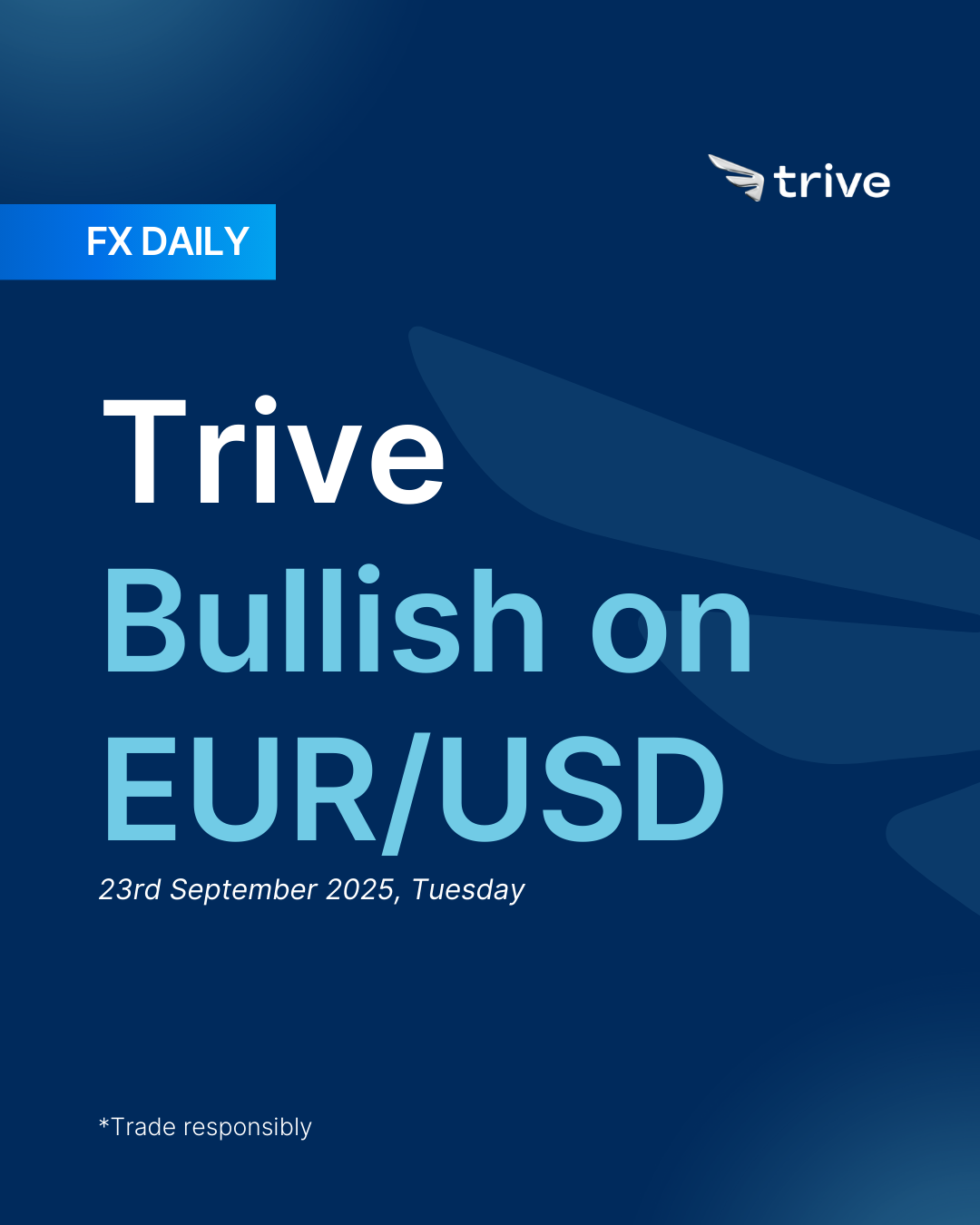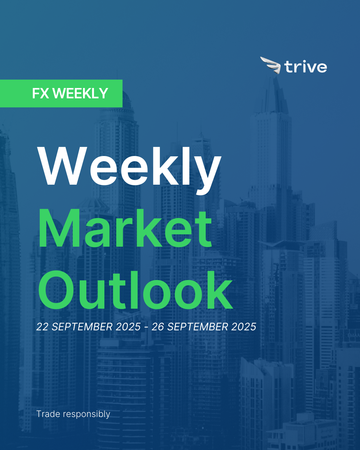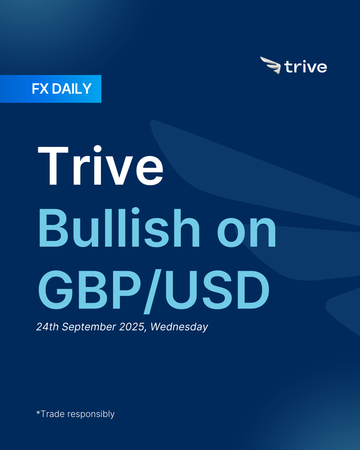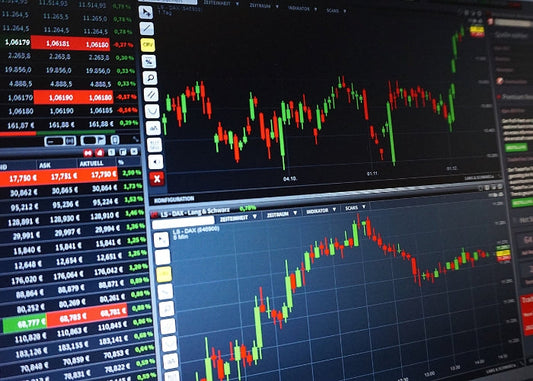FX Daily: Trive Bullish on EUR/USD

The euro’s rally above 1.1900 faded after Powell’s hawkish pushback, sending EUR/USD back below 1.1750. Still, ECB guidance stayed steady with inflation at 2% and wages stable, leaving no rush to ease. Euro fundamentals — external surplus, stable French risk premium, and higher-for-longer ECB stance — support resilience. With the Fed still seen cutting faster than the ECB, spreads should compress in the euro’s favor. Bias stays bullish, favoring dip-buying.
EUR: More room to upside
The Euro went through a dramatic round trip last week, rising to a fresh year-to-date high before reversing sharply to end lower. Its movements were almost entirely tied to the swings in US Dollar sentiment. EUR/USD started on solid ground, lifted by broad dollar weakness and dovish expectations for the Federal Reserve. The pair climbed steadily, breaking above 1.1800 despite a Fitch downgrade of France and mixed German data. The rally peaked on Wednesday just after the FOMC statement, which was initially read as dovish and sent the pair to a year-to-date high of 1.1919. However, the tone changed violently once Fed Chair Powell delivered a hawkish press conference. The resurgent dollar triggered heavy selling in the Euro, wiping out its earlier gains and pushing the pair back below 1.1750 by Friday’s close.
The European Central Bank offered no surprises and maintained a steady, data-dependent message throughout the week. Isabel Schnabel said rates are in a “good place” but noted that inflation risks remain tilted to the upside. Yannis Stournaras struck a “wait and see” tone, while Vice President de Guindos described rates as “appropriate” with risks balanced. Wage data for 2025 showed stability, with early signs pointing to more subdued pressures in 2026, giving the ECB no reason to shift its stance.
Eurozone data was mixed. Germany’s ZEW survey showed a rise in forward-looking sentiment at 37.3, far above expectations, but current conditions deteriorated further to -76.4, highlighting the economy’s present struggles. The final August HICP was revised down to 2.0% year-on-year, confirming inflation right at target and supporting the ECB’s wait-and-see approach. Fitch’s downgrade of France to A+ from AA- had little market impact, with spreads stable and the move seen as anticipated.
On the trade and geopolitical front, risks resurfaced as reports suggested the US may impose new national security tariffs on auto parts, a clear vulnerability for Europe’s export-heavy economy, especially Germany. The EU also advanced its 19th sanctions package against Russia, including plans to accelerate the phase-out of Russian LNG imports to January 2027 and measures targeting Russia’s “shadow fleet” of oil tankers.
Market sentiment left the Euro tied to the US story. The climb to 1.1919 reflected positioning for a dovish Fed, while the sharp rejection and drop back below 1.1750 showed the rally was fragile and built more on shifting dollar expectations than independent Euro strength.
Near term weak bullish. We keep a constructive tilt as last week’s supports still matter, with the ECB leaning to higher for longer, wage guidance steady, and the euro’s external surplus and calmer French risk premium providing a base. Final HICP at 2 percent confirms disinflation without forcing a quick easing path, and as markets digest the hawkish cut the euro can regain some independence from the dollar. If risk sentiment remains weak and the hawkish FOMC narrative continues to dominate, we would mark this down toward neutral as front end differentials move back against the euro.
Longer term weak bullish. The medium horizon bias is unchanged from last week since spreads are still likely to compress against the United States with the Fed easing faster than the ECB, while real incomes slowly improve and the external surplus anchors the currency. The energy backdrop is steadier and fragmentation risks remain contained, with BTP Bund spreads not flashing stress, which supports the profile outlined in your euro file. We would temper this stance if a run of softer inflation and wages pushed the ECB toward a clearer easing path or if sovereign and credit spreads widened enough to tighten financial conditions across the bloc. If the driver mix flips meaningfully or if policy guidance shifts more dovishly than expected, we will reconsider and lean toward a weaker currency until the data and pricing improve.
USD: Short at rally
The US Dollar experienced a volatile week that was shaped by a sharp hawkish reversal from the Federal Reserve, later reinforced by strong economic data. The DXY began the week on a soft note, trading below 97.50 as markets anticipated a dovish outcome from the FOMC meeting. The initial reaction to Wednesday’s decision was indeed negative for the dollar. A 25bps rate cut, a dovish dissent for a 50bps cut from new Governor Miran, and updated projections showing a median of two more cuts in 2025 pushed the DXY to a weekly low near 96.22. However, this sentiment was completely reversed during Chair Powell’s notably hawkish press conference. He described the move as a “risk management cut,” dismissed the need to move quickly, and emphasized a meeting-by-meeting, data-dependent approach.
This pivot was validated on Thursday when Initial Jobless Claims dropped sharply and the Philly Fed survey came in much stronger than expected, easing fears of an imminent labor market collapse. The dollar surged in response, broke through 97.50, and ended the week near its highs as traders aggressively repriced Fed expectations in line with Powell’s cautious stance rather than the dovish dot plot.
The FOMC delivered what many described as a “hawkish cut” by lowering the policy rate by 25bps to 4.00–4.25%, which was widely expected. New Governor Stephen Miran dissented in favor of a 50bps cut, while the updated Summary of Economic Projections was initially seen as dovish, showing a total of 75bps in cuts for 2025 instead of the previously forecast 50bps. Powell’s press conference proved to be the decisive moment, as he reinforced that the Fed does not feel pressure to move quickly and framed the decision as a precautionary cut in response to rising labor market risks. Fed speakers later reinforced this cautious tone, with Miran confirming he was the most dovish in the projections while more centrist voices such as Minneapolis Fed President Kashkari supported the cut but only saw two more this year if the data warranted it. Former St. Louis Fed President Bullard also called the decision “good” and said he would not have supported 50bps. Following these developments and Thursday’s data, markets scaled back their easing expectations, with implied cuts by December falling to around 44bps compared to nearly 70bps at the start of the week.
The economic data further supported the dollar. Initial Jobless Claims dropped to 231k from 264k, beating expectations of 240k and easing concerns about the labor market. Manufacturing data showed mixed results, with the NY Fed survey plunging to -8.7 but the Philly Fed index surging to 23.2, its strongest in months. Retail Sales in August were strong, with the control group rising 0.7% compared to the expected 0.4%, signaling continued consumer resilience, while housing remained weak as both starts and permits fell more than expected.
Trade and geopolitics also influenced sentiment. The week ended with a phone call between President Trump and President Xi that both sides described as positive and constructive, with Trump announcing plans to visit China early next year and noting progress on the fentanyl issue. Earlier in the week, US-China trade talks in Madrid were reported to have gone well, with officials mentioning a framework agreement on TikTok. However, tensions rose mid-week after reports that China instructed major tech firms such as Alibaba and ByteDance to stop testing and ordering a specific NVIDIA AI chip, instead pushing them toward domestic alternatives.
Market sentiment shifted dramatically as the week progressed. At the start, the dollar was pressured by expectations of a dovish Fed and an easing cycle. By mid-week, however, Powell’s hawkish message combined with stronger labor market and manufacturing data shifted the narrative to a Fed that is cautiously cutting into a resilient economy. This sharp pivot was clearly dollar-positive and set the tone for the week’s strong rebound.
Near term bearish. Our outlook remains bearish, as Powell’s hawkish press conference and the stronger data rebound did not change the broader picture of a Fed still leaning toward easing. The rise in unemployment to 4.3% and the slide in consumer confidence point to labor risks that dominate the policy path, even if retail sales and PMIs showed resilience. Inflation holding near 3% keeps the Fed cautious, but it is not accelerating enough to force a sustained shift in front-end pricing. Dollar gains may stretch further as markets digest the “hawkish cut,” yet we still view the mix of softer labor and stable risk appetite as favoring renewed weakness rather than lasting strength.
Longer term weak bearish. We keep a gradual softening bias as US outperformance cools and differentials compress, with the Fed’s own projections still pointing to cuts in 2025. Growth is uneven, with consumer spending and services staying firm but housing and labor showing cracks, which argues against a durable turn in favor of the dollar. Reserve status and safe-haven demand can create countertrend support in risk-off episodes, but absent a global shock, the balance of easing and narrowing spreads should cap upside over the medium horizon. If inflation and wages together show a sustained reacceleration, we would tilt stronger, but otherwise the weak bearish outlook stands. If the driver mix flips meaningfully or if policy guidance shifts more dovishly than expected, we will reconsider and lean toward a weaker currency until the data and pricing improve.
 EUR/USD 4H
EUR/USD 4H
Disclaimer
This material is provided for informational purposes only and does not constitute financial, investment, or other advice. The opinions expressed in this material are those of the author and do not necessarily reflect the views of Trive International. No opinion contained in this material constitutes a recommendation by Trive International or its author regarding any particular investment, transaction, or investment strategy. This material should not be relied upon in making any investment decision.
The information provided does not consider the individual investment objectives, financial situation, or needs of any specific investor. Investors should seek independent financial advice tailored to their individual circumstances before making any investment decisions. Trive International shall not be liable for any loss, damage, or injury arising directly or indirectly from the use of this information or from any action or decision taken as a result of using this material.
Trive International may or may not have a financial interest in the companies or securities mentioned. The value of investments may fluctuate, and investors may not get back the amount they originally invested. Past performance is not indicative of future results.
For more information about Trive International, please visit http://trive.com/int
Additional Information
Investing involves risk, including the potential loss of principal. Diversification and asset allocation strategies do not ensure a profit or guarantee against loss. The content in this material is subject to change without notice and may become outdated or inaccurate over time. Trive International does not undertake any obligation to update the information in this material.
By accessing this material, you acknowledge and agree to the terms of this disclaimer. If you do not agree with these terms, please refrain from using this information.
कोई टिप्पणी नहीं
Home
Trive
TriveHub





0 टिप्पणियाँ